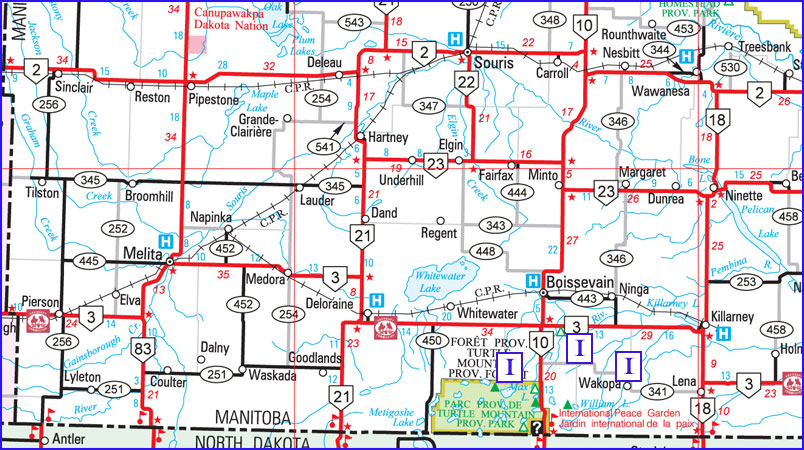Sawmills
| Even if
standing timber was available, no area in Manitoba could be
successfully logged for commercial use unless it lay near a waterway
system, or later, a railway. Therefore tracking the chronology of the
development of lumbering in the various regions of Manitoba is
relatively simple: follow the lakes and railways systems. In the southwest corner, however, there was also the fact that timber was scarce. There was a reason that so many homesteaders began their farming life in a sod hut. The scarcity of trees meant that the open prairie was easy convert into productive cropland. The downside was it was a long way even to get firewood, let alone building materials. Turtle Mountain was one place that was well wooded. That allowed early settlers in that vicinity the option of using locally sourced wood. The era of locally milled lumber in the southwest corner was short, as rail service allowed for an easily accessible supply of milled lumber in most areas. Some local sawmills continued to make use of Turtle Mountain timber for rough lumber, even after most building materials were shipped from elsewhere. Locations  Wakopa Wakopa was the first village in the region and home to the first sawmill. The Harrison Brothers and Mr. Williams built a sawmill in Wakopa in 1878 or 79. It was on the banks of Long River, where a dam was constructed to make use water power. The Fox Sawmill In 1880 the Fox family acme to the Wakopa area. Thomas and his oldest son Alfred set up a sawmill two miles northeast of Lake Max. People came from many miles around to use the lumber that was produced from this mill. Private Operations It was not uncommon for a farmer to own a small portable mill. Such operations continue to this day. In the Mountainside area, Sam Smith had a steam sawmill operating In the fall of 1882. Mr. Morton's Mill The Max Lake Sawmill also known as the Bolton Sawmill, it was built on Lake Max in 1881. It was bought by George Morton, then later owned by Hugh McCorquodale and then Bill Harvey. The mill sat on the northern end of the lake, just west of a stream that flowed into the lake from a slough a couple hundred metres back from the shore. Conclusion The Max Lake sawmill was an exception in that most sawmills only operated for a short time when settlement preceded railway links. The supply of timber on Turtle Mountain meant that locally produced lumber, rough cut for farm use, was marketable into the modern era, |


